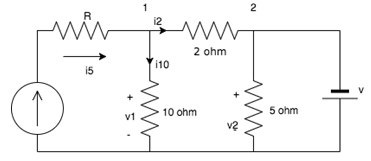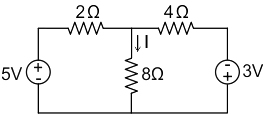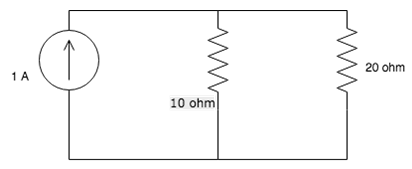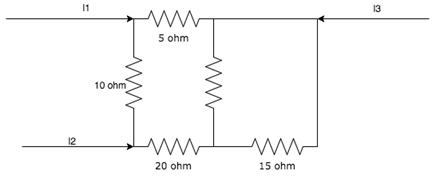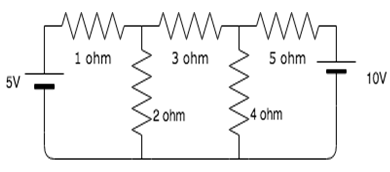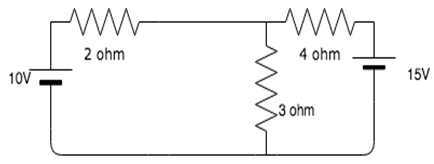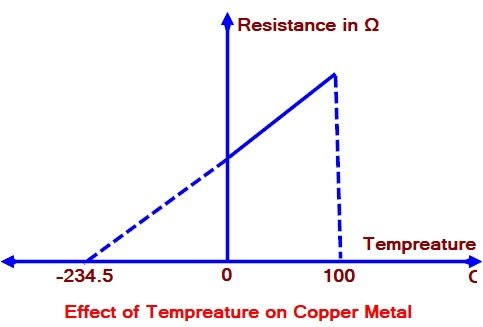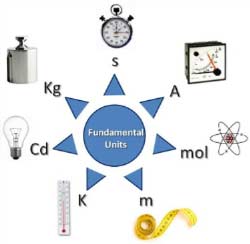21. Mathematically, Kirchhoff’s Voltage law can be ________
A. ∑_(k=0)n(V) = 0
Show More
Answer: A
According to KVL, the sum of all voltages of branches in a closed loop is zero.
Kirchhoff’s voltage law is based on the principle of conservation of energy. This requires that the total work done in taking a unit positive charge around a closed path and ending up at the original point is zero.
22. Find the value of v if v1 = 20V and the value of the current source is 6A.
A. 10V
Show Explanation
Answer: B. 12 V
The current through the 10 ohm resistor = v1/10 = 2A.
Applying KCL at node 1:
i5 = i10+i2. i2 = 6-2 = 4A.
Thus the drop in the 2 ohm resistor = 4 × 2 = 8V.
v1 = 20V;
hence v2 = 20-v across 2 ohm resistor = 20-8 = 12V
v2 = v s
ince they are connected in parallel.
v = 12V.
23. In the circuit shown in the figure, find the current flowing through the 8 Ω resistance.
0.25 A
0.50 A
0.75 A
0.10 A
Show Explanation
Answer.1. 0.25A
Let voltage across the 8 Ω resistance is ‘V’ volt.
∴ Current across the 8 Ω is given by
I = V/8
Now by applying KCL at the node we get
\({{V – 5} \over 2}+{{V +3} \over 4}+{{V } \over 8}=0\)
4V – 20 + 2V + 6 + V = 0
V = 14/7
Now current flowing through the 8 Ω resistance is
I = 2/8
I = 0.25 A
24. Calculate the current A by using Kirchhoff’s current law
A. 5A
Show Explanation
Answer: C
KCl states that the total current leaving the junction is equal to the current entering it. In this case, the current entering the junction is 5A+10A = 15A.
25. In the figure shown, the current 𝑖 (in ampere) is __________
-1 Amp
5 Amp
2 Amp
-2 Amp
Show Explanation
Answer.1. -1 Amp
Apply KCL at node V1 , we get:
\(\frac{{{{\rm{V}}_1} – 0}}{1} + \frac{{{{\rm{V}}_1} – 8}}{1} + \frac{{{{\rm{V}}_1} – 0}}{1} + \frac{{{{\rm{V}}_1} – 8}}{1} = 0\)
4V1 – 16 = 0
V1 = 4 V
Again, applying KCL, we can write:
\({\rm{i}} + \frac{{\left( {0 – {{\rm{V}}_1}} \right)}}{1} + 5 = 0 \)
i = V1 − 5 = 4 − 5 = −1 Amp
26. By using Kirchhoff’s current law calculate the current across the 20-ohm resistor.
A. 20A
Show Explanation
Answer: D
Assume a lower terminal of 20 ohms at 0V and upper terminal at V volt and applying KCL, we get
V/10 +V/20 = 1. V = 20/3V
So current through 20 ohm
= V/20 = (20/3)/20
= 1/3 = 0.33V.
27. The total charge q(t), in the coulombs, that enters the terminal of an element is:
\(q(t) = \left\{ {\begin{array}{*{20}{c}} {0\,\,\,\,\,\,\,\,\,\,\,\,\,\,\,\,\,\,\,t < 0}\\ {2t\,\,\,\,\,\,\,\,\,\,\,\,0 \le t \le 2}\\ {3 + {e^{ – 2(t – 2)}}\,\,t > 2} \end{array}} \right.\)
Determine the current at t = 5 s.
0 A
2 A
-2e-6 A
3 + e-6 A
Show Explanation
Answer.3.
Electric current, i = Rate of transfer of electric charge.
i(t) = dQ/dt
Calculation:
t = 5 s so, equation 3rd is consider.
\(i = \frac{{dQ}}{{dt}} = \frac{d}{{dt}}\left( {3 + {e^{ – 2\left( {t – 2} \right)}}} \right)\)
\(i = {e^{ – 2\left( {t – 2} \right)}}\frac{d}{{dt}}\left[ { – 2\left( {t – 2} \right)} \right]\)
\(i = {e^{ – 2\left( {t – 2} \right)}}\left( { – 2} \right)\)
\(i = – 2{e^{ – 2\left( {t – 2} \right)}}\)
Put the value of t = 5, then we get,
i = −2e−6 A
28. Calculate the value of I3, if I1 = 2A and I2 = 3A by applying Kirchhoff’s current law
A. -5A
Show Explanation
Answer: A
According to KCl, I1+I2+I3 = 0.
Hence I3 = -(I1+I2) = -5A.
29. Find the value of the currents I1, I2, and I3 flowing clockwise in the
A. 1.54A, − 0.189A, − 1.195A
Show Explanation Answer: A
The three mesh equations are:
− 3I1 + 2I2 − 5 = 0
2I1 − 9I2 + 4I3 = 0
4I2 − 9I3 − 10 = 0
Solving the equations, we get
I1 = 1.54A, I2 = − 0.189 and I3 = − 1.195A.
30. Find the value of the currents I1 and I2 flowing clockwise in the first
A. 0.96A, 1.73A
Show Explanation Answer: B
The two mesh equations are:
5I1 − 3I2 = 10
− 3I1 + 7I2 = − 15
Solving the equations simultaneously, we get
I1 = 0.96A and I2 = − 1.73A.
